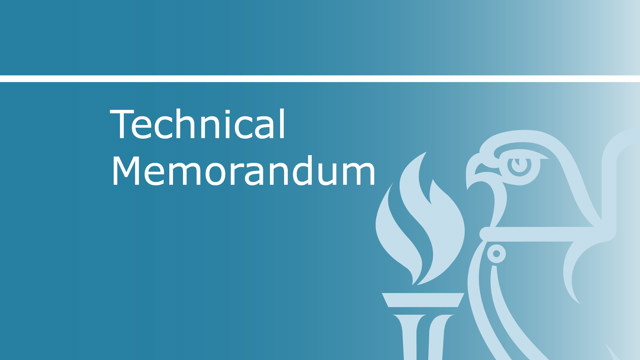
The climate emergency is driving a requirement to deliver highly performing buildings, with operational energy use consistent with net zero targets. To deliver this, design teams need access to tools and techniques that can reliably model in-use energy performance based on design proposals, and that can help inform design proposals.
Built environment clients are increasingly interested in the operational energy performance of the buildings that they invest in, procure, or occupy. This can lead to targets being set in the project brief to achieve energy performance in line with the design estimates. As a result, building services engineers and energy consultants are being asked to provide estimates of the likely operational energy performance of buildings at the design stage, and accordingly to inform the design proposals.
This document aims to help building services engineers and energy modellers to respond to this request in a robust way.
The TM54 methodology covers all types of modelling. ‘Modelling’ is used in this document to encompass calculations of energy performance in a wide sense, including spreadsheet and steadystate tools as well as dynamic simulation modelling (DSM). ‘Simulation’ is used to specifically refer to DSM. ‘Modeller’ is used in this document but on some projects, some of the activities may be carried out by or with a building services engineer or other discipline, working together with a modeller.
The previous version of this methodology was tested using a case study building and further validated using another building with both design and operational energy data. The main principles remain valid in this edition, but CIBSE aims to provide further case studies on this revised methodology. Users of TM54 are invited to contact CIBSE if willing to provide case studies and support further validation and illustration of the TM54 methodology.
The aims of this document are to:
- help engineers deliver on a project brief where an annual operational energy target has been set, by informing the development of the design, controls and operational strategy
- provide a methodology that engineers can use to undertake better-informed calculations of energy use in operation and to produce performance targets (and possibly budgets) against which measured performance in use can be compared
- demonstrate that energy performance is dependent on how the building is run and maintained, as well as how it is designed and constructed.
This document is written mainly for engineers and consultants working in the UK. The methodology can be applied to other countries, with the appropriate adjustments to the references, weather data etc.
The methodology can be applied to any type of building, new or existing.
Note: a corrigendum to TM54 was issued in July 2024, making corrections to pages 35 and 36. (This corrigendum supersedes corrections made to Box 5 on Page 36 in July 2023). Purchasers of the hard copy should download this corrigendum here: TM54 Corrigendum. Those who have downloaded the PDF do not need to download this corrigendum - simply download the TM54 PDF again, as changes have been incorporated.
Three TM54 case studies are included along with the download of TM54. They can also be accessed here:
CIBSE TM54 energy projections 1: A case study using quasi-steady state modeling (Jain et al, 2024)
Contents
- Principles of evaluating energy use
- Why estimate energy use?
- Current situation and the performance gap
- Basis for the methodology
- Levels of modelling
- Scenario testing and sensitivity analysis
- Risks, assumptions and limitations of evaluating energy use
- Limitations
- Assumptions and simplifications
- Recommended processes
- How evaluating energy use fits within a project
- Overview
- Targets and benchmarks
- Design and modelling for in-use evaluation
- The methodology
- Step 0: Choosing the modelling approach
- Step 1: Constructing and building the model
- Step 2: Estimating operating hours and occupancy factors
- Step 3: Evaluating lighting energy use
- Step 4: Evaluating energy use for lifts and escalators
- Step 5: Evaluating energy use for small power
- Step 6: Evaluating energy use for catering
- Step 7: Evaluating energy use for server rooms
- Step 8: Evaluating energy use of additional plant and equipment
- Step 9: Evaluating energy use of domestic hot water
- Step 10: Adding internal heat gains to the model, for energy uses calculated outside the model
- Step 11: Modelling HVAC systems and their controls
- Step 12: Taking management considerations into account
- Step 13: Sensitivity analysis
- Step 14: Scenario testing
- Step 15: Reviewing the results against targets and benchmarks
- Step 16: Reporting and implementation matrix
- Step 17: Quality assurance (QA)
- Post occupancy evaluation
- Annex A: TM54 implementation matrix
- Annex B: TM54 Outline Report headings
Author: Julie Godefroy (CIBSE)
Working Group members: Esfandiar Burman (UCL Institute for Environmental Design and Engineering), David Cheshire (AECOM), Darren Coppins (Built Physics), Susie Diamond (Inkling), Mark Dowson (Buro Happold), Jennifer Elias (Cundall then AECOM), Nishesh Jain (UCL Institute for Environmental Design and Engineering), Dejan Mumovic (UCL Institute for Environmental Design and Engineering)
Contributors: Laura Barrett-Affleck (AECOM), Sophie Parry (Zumtobel Group), Gina Barney (Gina Barney Associates)
Peer reviewers: Ben Abel (Hilson Moran), Robert Cohen (Verco), Ed Cremin (Etude), Annie Marston (Hydrock), Leon Tatlock (Etude)
The Institution acknowledges the material provided by the authors and contributors to the previous edition: Mark Bacon, David Cheshire, Andrew Cripps, Xavier Fulbright, Brian Graham, Anna Holding, Martin McLaughlin, Anna Carolina Menezes and Ant Wilson.